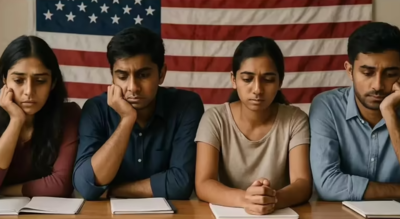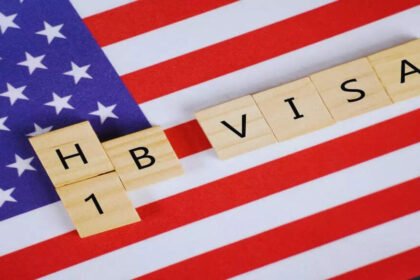The total number of active F-1 and M-1 international student SEVIS records in the US were a whopping 15.8 lakh in 2024, marking a 5.3% increase over the previous calendar year. According to a report released by the US Immigration and Customs Enforcement (ICE) – ‘SEVIS by the Numbers 2024’, while international students hailed from more than 229 countries, this growth was substantially fuelled by students from India.Asia had the largest number of active international student records in the US, nearly 11 lakh students from this continent accounted for nearly 72% of the total foreign student population. Nearly 4.2 lakh Indian students represented an increase of 11.8% compared to 2023, while the 3.2 lakh foreign student records from China, which is the other major source country, represented a small decrease of 0.25 percent compared to 2023. Indian students constitute nearly 27% of the total foreign student population in 2024, followed by Chinese at 20%.The data in this report is drawn from the Student and Exchange Visitor Information System (SEVIS), a web-based system that the Department of Homeland Security uses to maintain and manage information on foreign students and exchange visitors. While the F-1 visa is held by those undergoing academic study courses, the M-1 visa is given to students undergoing vocational programs.According to the ICE-report, more than 90% or to be precise 14.3 lakh international students were enrolled in higher education degree programs, California enrolled the largest number of foreign students at 2.37 lakh, followed by New York at 1.72 lakh. attracted the maximum number of international studentsWhile this ICE-report is based on data for 2024, the recent trends are not as rosy. Chris R. Glass, a professor and higher education specialist at Boston College analysed SEVIS data between March 2024 to March 2025. According to him, “The overall decline of -11.3% from March 2024 (with 11.53 lakh active students) to March 2025 (with 10.22 lakh active students) is remarkable in both scale and speed.”His study shows that the number of students from India declined by nearly 28% from 3.54 lakh in March 2024 to 2.55 lakh a year later. The number of Chinese students rose marginally by 3.28% to stand at 2.63 lakh as of March 2025.Glass points out that “The current year-over-year decline is a reflection of an enrollment cycle that began under the Biden administration, so the March 2025 numbers have yet to reflect any impacts of policies implemented under the second Trump administration.”Anecdotal evidence suggests that US is losing its lustre as an attractive study destination for Indian students owing to a multitude of factors such as: The arbitrary termination of SEVIS records and/or F1 visas of international students – which led many to self deport, while others stayed back to battle it out in courts; the uncertainty relating to continuity of the extended optional practical training program (OPT) for STEM students, the temporary suspension of consulate interviews pending release of a social-media scrutiny policy and mass layoffs in corporate America. Thus, the numbers for March 2026 could be much lower.
Indian students dominate the STEM field:
While international students are eligible for a one year OPT, those from the Science, Technology, Mathematics and Engineering (STEM) fields, post their graduation, get an additional two years of work experience under the OPT program.There were 1.94 lakh OPT students with both an employment authorization document (EAD) and who reported working for an employer in 2024, compared to 1.60 lakh 2023. This marks a 21.1 percent increase from 2023 and the fourth year of consecutive growth, states the ICE-Report.In 2024, nearly 1.65 lakh international students participated in the STEM-OPT extension program. The ICE-report points out that Indian students are particularly prominent in the post-completion OPT- STEM extension program, accounting for a substantial 48.0% of participants. and 20.4% from China.






